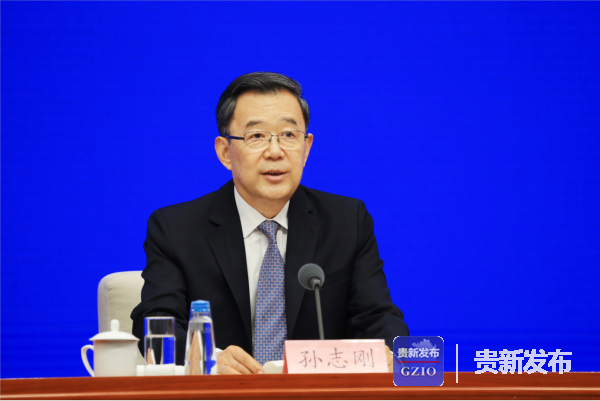
 |
|
Sun Zhigang, secretary of the CPC Guizhou Provincial Committee, introduces Guizhou's efforts in poverty alleviation at the news conference. [Photo/gog.cn] |
After delivering the report, Sun and Guizhou Governor Shen Yiqin also answered some questions posed by several reporters during the conference.
Q1: So far, Guizhou has helped 7.68 million people out of poverty. What will the province do for its next-step?
Sun: Thanks for your question. It is our responsibility to take targeted measures against poverty and we will carry out the work from the following six aspects:
First, we will improve infrastructure first to lay a solid foundation for poverty alleviation. In recent years, we have built 8 million km roads for rural areas, completely solving transportation inconvenience. Meanwhile, we have carried out measures to ensure the cleanliness of drinking water for farmers. Broadband network construction has been progressing in rural areas. And we will further strengthen infrastructure construction and pay close attention to the management and maintenance of infrastructure.
Second, relocation from poverty-stricken areas to new houses has changed the living conditions for people. We have helped 1.88 million people move into new houses since 2016. At present, we have basically finished the relocation work and are turning our work focus on increasing their incomes. We will carry out this work by building improved systems for public services, training and employment, cultural services, community governance, as well as grassroots Party construction. We will also make sure that every household has at least one person that is employed and working.
Third, we will pay attention to promoting poverty relief by developing industries in rural areas, so as to bolster the support for consistent and stable work on poverty-alleviation. Guizhou is now promoting the planting of high-efficiency crops and reducing corn plantations, which are low in efficiency. At present, the forest economy, rural tourism, and special tourism products are developing well in Guizhou, which have made positive contributions to poverty alleviation efforts.
Fourth, we have made efforts to improve education, healthcare, and housing for farmers. Every year, we allocate a certain amount of money to ensure the compulsive education for children living in poverty-stricken households. While improving medical services in rural areas, we are carrying out measures to ensure basic medical services, insurance, and assistance in rural areas. Renovation work on 510,000 dilapidated houses in rural areas has been completed.
Fifth, we focused on deeply poverty-stricken areas by fund allocation, eastern and western cooperation in China, infrastructure construction, and additional assistance help. We have made targeted plans to assist the 1,721 villages that are in deep poverty.
Sixth, we have implemented five special governance plans to eradicate poverty in Guizhou and have made remarkable achievements. We are now improving support for poverty-stricken areas, policy fund usage, legal fund usage, closer cooperation between the eastern and western regions of China, as well as more targeted measures for poverty-relief.
We are trying our best to alleviate poverty to make sure that all the poverty-stricken people and counties will have gotten out of poverty by the end of 2020.
Q2: Guizhou is a key transportation hub in southwestern China. How should we view the province's strategic status as it is changing its transportation network?
Sun: Thank you for your question. Guizhou is the only province in China without plains, with 92.5 percent of its land being mountains and hilly lands. Transportation inconvenience has always been a barrier for Guizhou's economic development, but in recent years, the province has progressed in its economy, as well as its regional exchanges and cooperation, thanks to the transportation network changes.
First, with the comprehensive transportation system taking shape, Guizhou has started to see more people, goods, and information enter the province, which improves the exploration rate of its resources. In 2018, Guizhou attracted 7,317 projects from outside of the province, receiving 1.01 trillion yuan, among which 230 of them belong to Fortune Global 500 companies.
Second, Guizhou has 18 provincial channels connecting to the outside and that number will increase to 30 by 2022. The number of railway channels will be 14 then. High-speed railways from Guizhou to Guangzhou, Changsha, Kunming, and Chongqing have opened, and Guizhou will open more to Chengdu and Nanning. In 2018, 567 million people drove to Guizhou for tourism purposes, a year-on-year increase of 21.6 percent.
Third, Guizhou now has been more connected to its neighboring areas, including Chongqing, Sichuan, Yunnan, Guangxi, and Hunan. In 2018, it received 62.72 million cars, doubling the number in 2015.